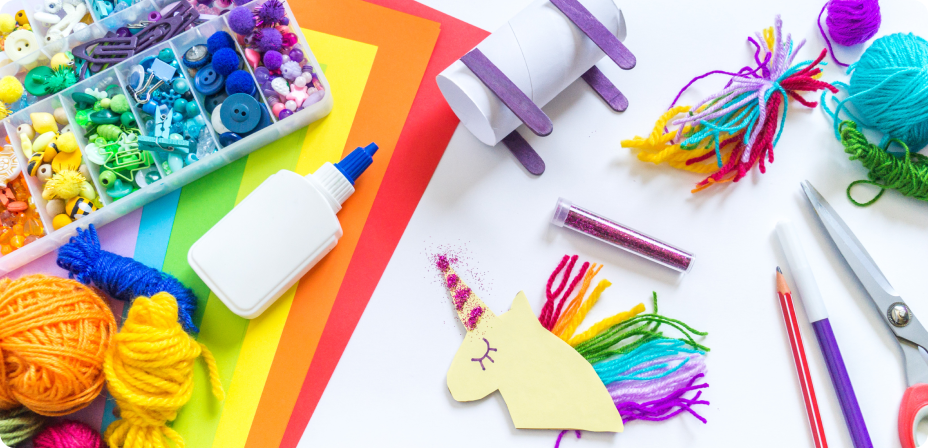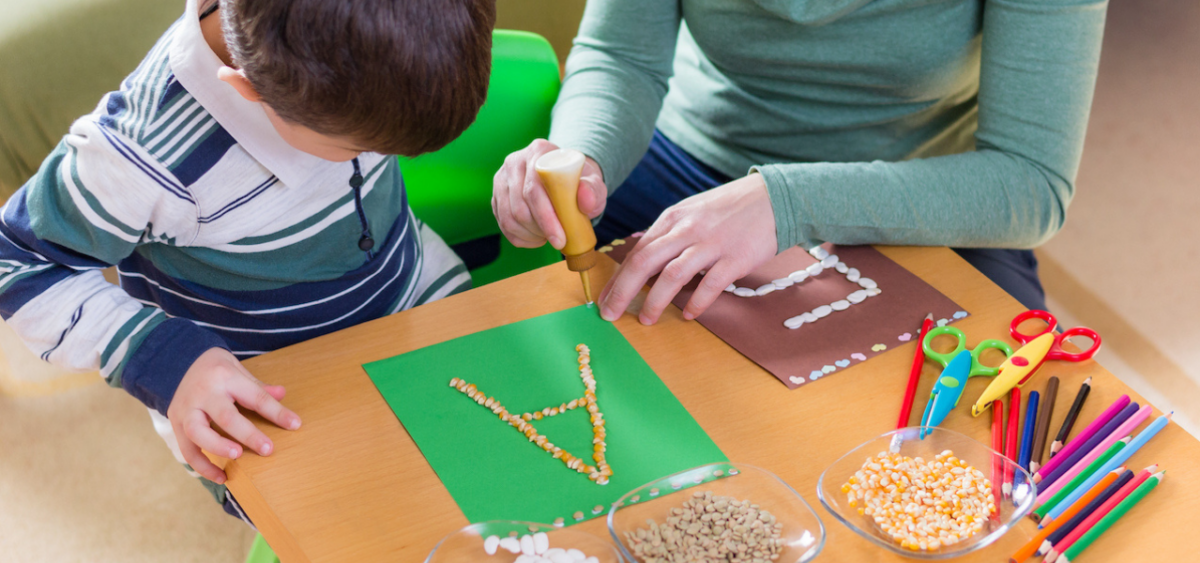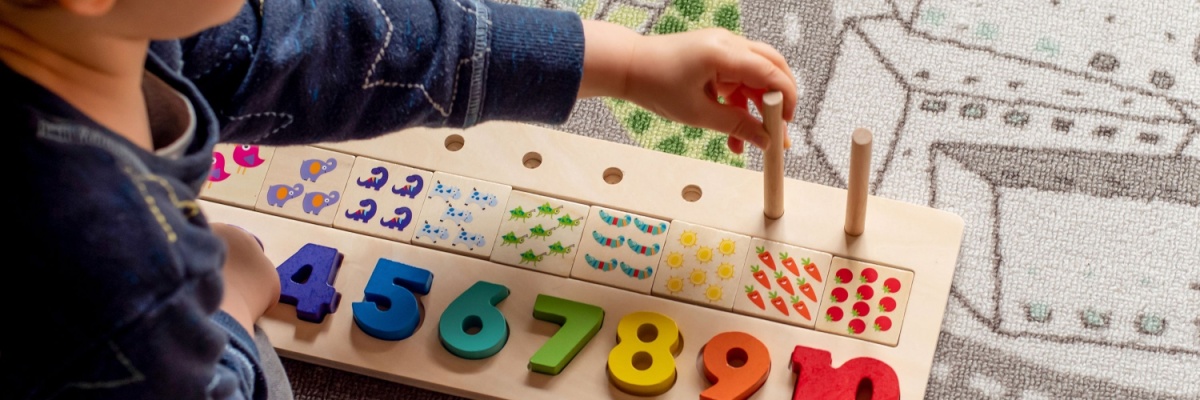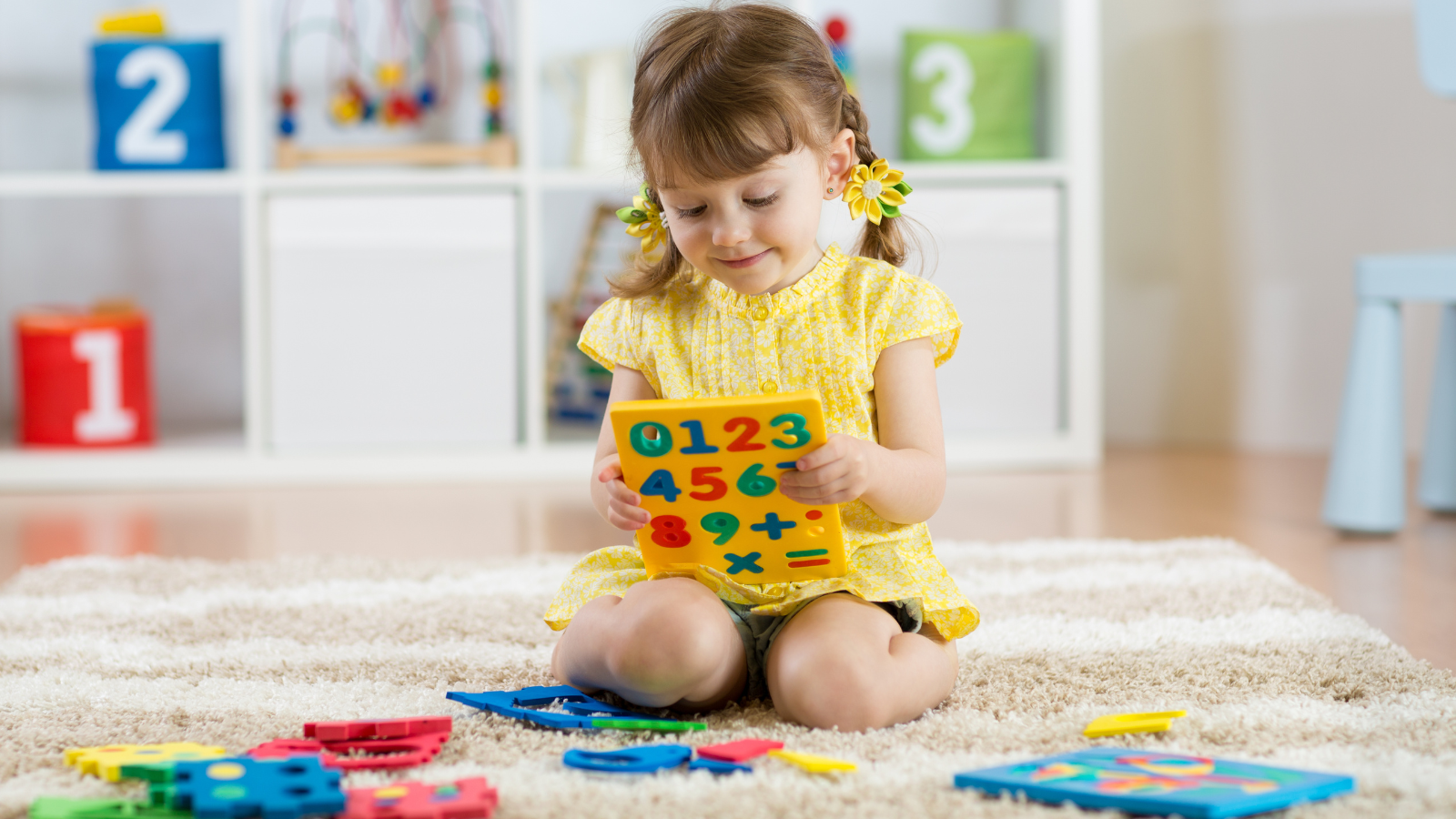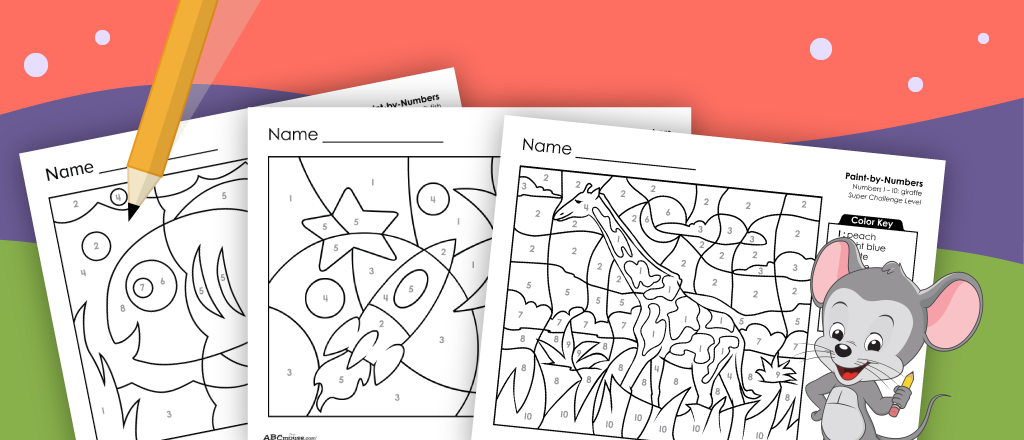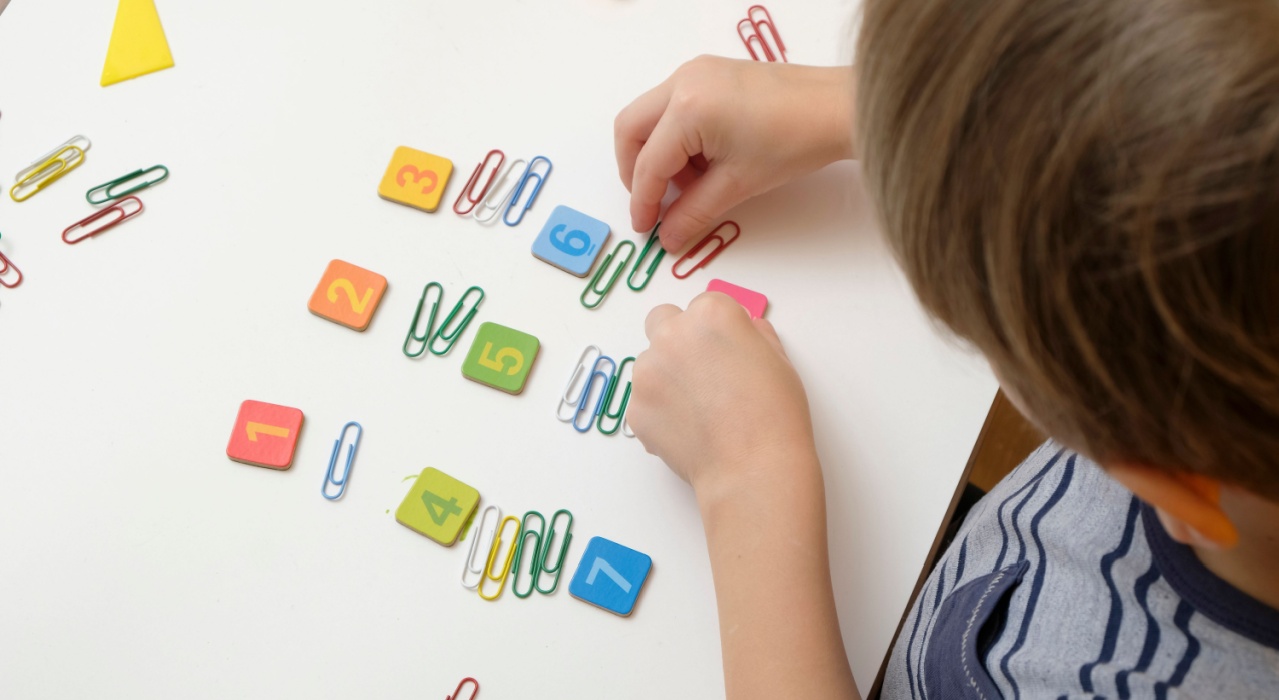Hands-On Math Activities for Preschoolers To Second Graders
30 min. activity
Share
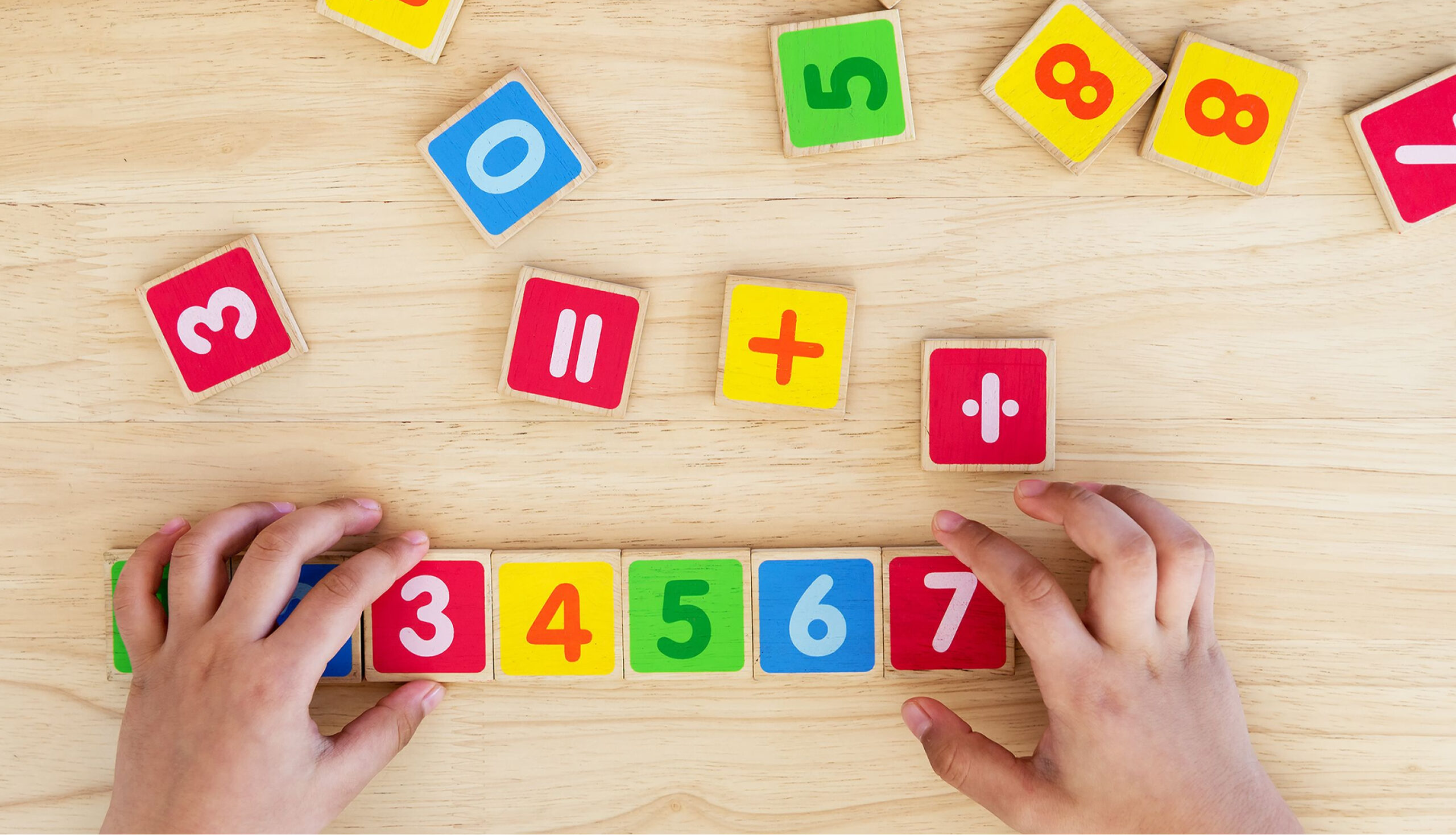
Adding hands-on math activities to your child’s learning can add fun and variety to their day while further enhancing their studies. Math can sometimes feel like an abstract and challenging subject, but it becomes more accessible and engaging when paired with tangible, hands-on tasks.
It also provides more opportunities for your children to engage with materials and concepts using all of their senses, which can lead to a deeper understanding of mathematical concepts.
The Benefits of Hands-on Math Activities
Children learn in a variety of ways—some do well with traditional methods like worksheets and flashcards, but this can limit the ways kids learn and practice. By bringing hands-on activities into your home, you provide engaging and entertaining activities that use different parts of the brain. Using a variety of approaches helps children find different ways to connect with what they’re learning.
Hands-on math activities can also be a lot of fun! This is especially important for a subject like math, which can sometimes seem dull to kids. When you add interactive, hands-on elements to learning, children become more engaged, and engaged learners pick up information more quickly and often retain it better.
Here are some hands-on math activities for younger children. These activities can be combined with existing online programs to enhance your child’s learning experience.
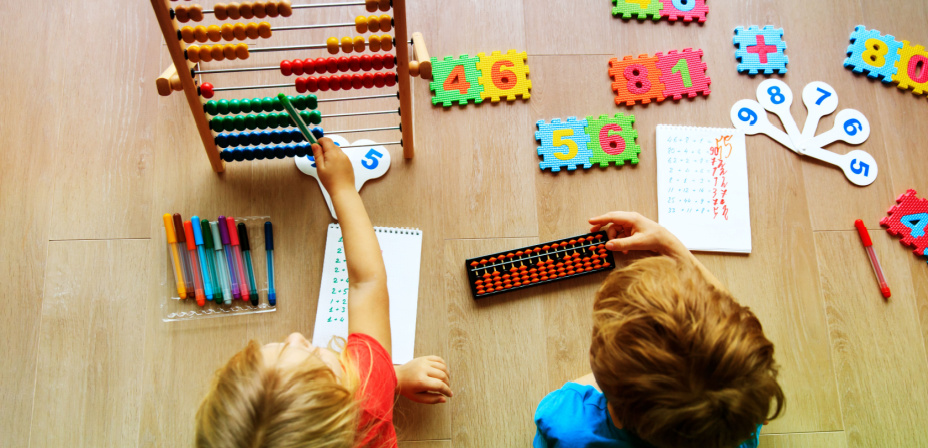
Preschool Hands-on Math Activities
In the preschool years, children begin to grasp foundational math concepts that set the stage for more advanced learning. They start to understand the relationship between numbers and quantities, recognizing the significance of one, two, three, and beyond.
These young learners can distinguish between concepts of big and small, many and few. They also become familiar with basic geometric shapes like circles, squares, and triangles. Engaging in hands-on math activities for children ages 3-4 not only reinforces these essential skills but also fosters a love for learning math from a young age.
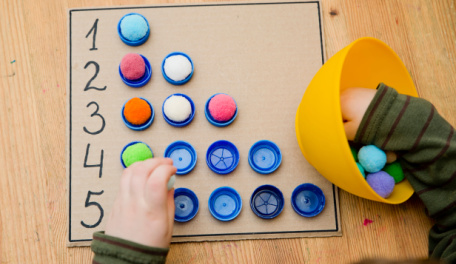
Count Everything: Whether it’s the number of peas on a plate, cars in the driveway, or people in the room, use the opportunity to practice counting.
Ask children to compare numbers, too, with questions like “Are there more red cars or blue cars?” or “Who has the most crackers left on their plate?”
Play Go Fish: Use a regular deck of cards with the face cards removed. As you and your child ask each other for specific number cards, your child practices associating the shape of a number with its name.
Take learning a little further by working with your child to count the number of hearts, clubs, diamonds, or spades on the card.
Add One More: Ask your child to gather up a few of their favorite toys or stuffed animals or lay out a few pieces of a favorite snack. Work with your child to count how many items there are, then ask them to add one more to the group.
After adding one more item to the group, ask your child how many items they have now. This is a great first step towards learning the concept of addition.
Kindergarten Hands-on Math Activities
At this age, students develop number sense and can learn to count up to 100. They recognize that numerals represent a number of objects and understand the concepts of more or less, bigger or smaller, etc …
Children can also learn the names of basic shapes and develop the ability to identify and match patterns. Try these hands-on math activities for children ages 5-6 to help build on the early concepts they’re learning.
Build a Domino Number Line: Sort dominoes by the total number of dots on each, and line up the piles from those that total one to those that total 12. Label each pile with the corresponding numeral written on a piece of paper.
This activity builds a skill called one-to-one correspondence, or cardinality, where kids recognize that a number of items equals a numeral.
Hunt and Count: Indoors or out, hold a scavenger hunt. Ask your children to find three stones and five leaves or to bring you ten items that are green. Work on the concept of counting on and basic addition by asking for more of the same item.
For example, you can say, “We have three stones. Can you bring me four more? Now how many stones do we have?”
Make Block Patterns: Use a set of shape blocks to create a pattern, and ask your student to re-create it or add on to it. Have them name the shapes and colors used too.
If you don’t have pattern blocks, cut shapes from colorful construction paper instead or use any other household items you may have.
First Grade Hands-on Math Activities
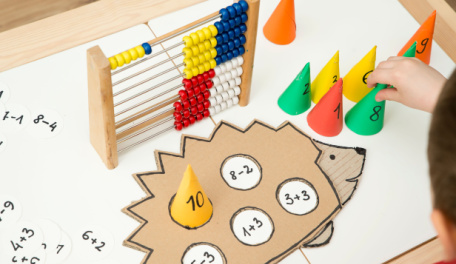
At this age, children are starting to count with ease, both forward and backward. If you haven’t already, bring in addition, subtraction, and skip counting to prepare them for multiplication. Introduce basic place value, work on telling time and money skills, and build measurement and graphing skills. These hands-on activities can help.
Bowl and Subtract: Pick up an inexpensive toy bowling set or make your own from empty plastic bottles. As kids bowl and knock down pins, have them write the resulting equation.
For example, if there are 10 pins and they knock down 4, write “10-4=6.” It’s also fun to do this activity with block towers.
Play Flashcard I Spy: Lay out addition or subtraction flashcards with math facts your child is working on. Say, “I spy with my little eye a card with a sum of 12.” See how quickly they can find all the cards that match.
As your child completes this activity with more ease, move on to challenging them with larger numbers.
Have a Dice Battle: Grab a set of dice and take turns rolling them. With each turn, add up the numbers. Whoever has the highest sum wins that round.
This can become a game of subtraction when the winner rolls the lowest sum.
Second Grade Hands-on Math Activities
By second grade, students have built a strong foundation in basic arithmetic and begin to explore more complex math concepts. They can efficiently perform addition and subtraction with multiple digits, and start to understand the basics of multiplication and division. These students are also introduced to concepts of fractions, recognizing parts of a whole.
Additionally, they dive deeper into geometry, identifying more intricate shapes and understanding their properties. Engaging in hands-on math activities for children ages 7-8 helps solidify these concepts, making them more tangible and fostering a deeper understanding and appreciation for mathematics.
Play Skip Counting Hopscotch: Make the usual hopscotch board on your sidewalk, but label the squares with skip-counting numbers like 2, 4, 6 or 5, 10, 15, etc …
Skip counting helps prepare students for multiplication, and this is a fun way to practice!
Match Plastic Eggs: You can use plastic eggs for many hands-on math activities. Label one half with a math fact and the other with the answer or draw an analog clock on one half and write the time out on the other.
You can also label an egg with an amount of money, like 67 cents, and ask kids to put the correct amount of coins inside.
Survey and Graph: Have kids ask questions of friends and family members, then graph out the answers. Start with simple questions like “Do you like chocolate or vanilla ice cream best?” Represent the answer as a bar graph or line graph.
As your child gets more comfortable with concept of creating bar and line graphs, encourage them see out more complex information from them. Ask questions like “How many more people like chocolate ice cream than vanilla ice cream?”
Make learning math feel like play with free online math games from ABCmouse. ABCmouse also offers an extensive online curriculum that’s expertly designed to help kids grow their reading and math skills. Learn more here.
Related Blog Articles
Related Activities
-
Easy Ways to Teach Counting
“Explore fun and engaging ways to teach counting to young children with activities like counting games, songs, and daily routines. Learn key skills such as one-to-one…
-
Number & Counting Activities for Preschoolers
Boost your child’s number recognition and counting skills with these 25 engaging activities. From classic games like hopscotch and Go Fish to creative crafts and online…
-
Tips For Adding Digital Math Games into Your Child’s Learning
Enhance your child’s math learning by integrating digital games with traditional methods. Discover tips for fostering interactive learning, establishing a routine, and incorporating games into weekly…
-
Color by Number Worksheets
Free printable color-by-number worksheets help kids learn and practice numbers through fun and engaging activities. Perfect for preschoolers, kindergarteners, and first graders, these worksheets support foundational…
-
How Online Games Can Enhance Foundational Math Concepts
Discover how online games can enhance foundational math skills for children. Explore how digital games like Hamlet the Hungry Hamster and Spider Web Shapes transform abstract…
-
30 Fun and Engaging Number Sense Activities for Pre-K and Early Elementary
Discover 30 fun and interactive number sense activities perfect for preschool and early elementary students. From counting songs to digital games and hands-on exercises, these activities…

